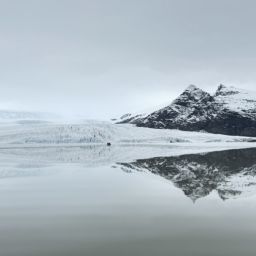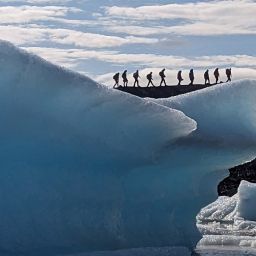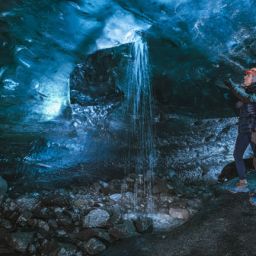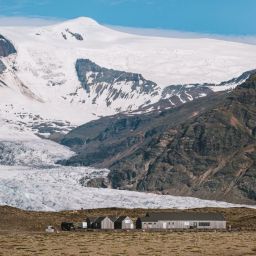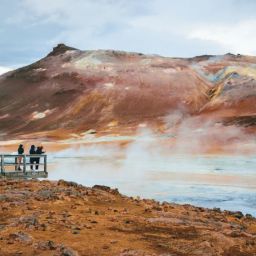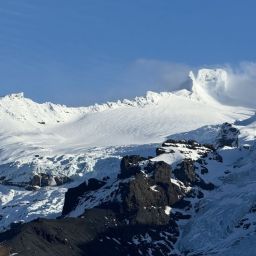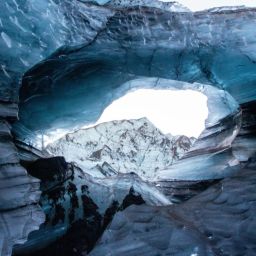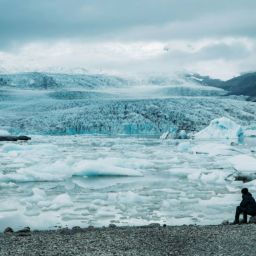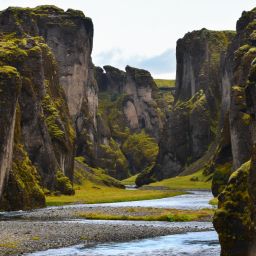
Nothing that people can build, not even if they are the world’s greatest architects, comes close to the majestic beauty of nature. That’s especially true of Iceland’s breathtaking ice caves. A guided tour to one of these extraordinary subterranean caverns is guaranteed to leave you wide-eyed and open-mouthed. But before you book your Fjallsárlón excursion to visit a natural ice cave in Iceland, it’s a good idea to read this guide as we explain what they are, how they’re formed and where you can find them.
What are ice caves?
Let’s start by explaining what ice caves are. In fact, there are several types. Strictly speaking, a natural ice cave is any hollowed out space underground that has ice in it. So, for instance, if you step inside a rocky cave in winter after a prolonged period of cold weather and there are icicles inside, that qualifies it as an ice cave. Some of Iceland’s lava caves are cold enough for there to be ice inside, like Lofthellir for instance.
But the landforms in southeast Iceland that many of us associate with the term ice cave are actually correctly termed glacier ice caves. Their vivid blue colour makes them a breathtaking sight. They occur wherever the ice of a glacier has been hollowed out by natural processes. Basically, everything that you see is ice: walls, ceiling, floor, the lot. These are the most striking and, unsurprisingly, they feature on many travellers’ bucket lists as a result.
How is a natural ice cave in Iceland formed?
If you’re keen to visit a natural ice cave in Iceland, then tours typically run from November to March. There’s a reason that glacier ice caves can’t be visited year-round. In spring, the air temperature begins to rise. This causes the surface of the ice to begin to melt and when that occurs, rivulets of water find the easiest route downhill thanks to our old friend gravity.
It’s a normal process, particularly in the lower reaches of the glacier which geographers refer to as the “zone of ablation”. In colder weather, snow accumulates on the upper sections of the glacier. Over the course of a year, assuming the climate is stable, there’d be little change overall. The glacial retreat that we are experiencing worldwide is a consequence of an upward trend in global temperatures.
Now back to that meltwater: it trickles into cracks and crevasses on the glacier, widening spaces and rippling their surfaces as it erodes them. Over time, these gaps get bigger and eventually you’re left with an extraordinary hollowed out section deep inside the glacier which is what we know as an ice cave. Tunnels and holes form at the edge which enable hikers to step inside.
The ice appears blue because of the refraction of light. Over time, the ice is compacted by the weight of the glacier above. Any air bubbles that were trapped within the ice are squeezed out. When light passes through the ice, most of the visible colour spectrum is absorbed, but blue (short wavelength) light is the exception. It’s transmitted and scattered, which is why glacier ice caves are blue.
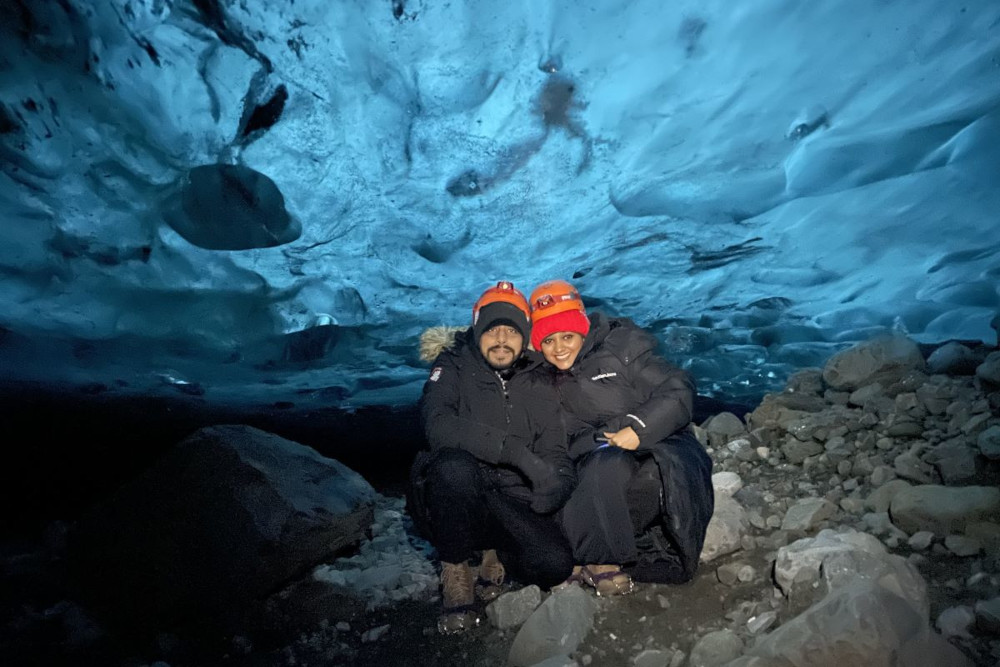
Vatnajokull -blue Ice Cave Fjallsarlon Lagoon
Where do you find these natural ice caves in Iceland?
The best part of Iceland to visit if you’re interested in a guided tour of a natural ice cave is the south east of the country. Vatnajökull, Europe’s largest glacier, dominates this part of Iceland – it covers 8% of its land area and is visible from the ring road. While road trippers might at first be content to admire it as they pass, there’s no substitute for a close up look.
And you can do that not only on the outside but inside too. At its fringes there are many ice caves that can be safely accessed if you know where to look. Getting there can be tricky and the gravel roads that lead up onto the glacier are unsafe to follow if you aren’t familiar with the terrain. But on an organised tour, all this will be taken care of for you, with experienced drivers and a guide who’s well-versed in the lie of the land.
Why do you need a guide to visit an ice cave?
One of the most dangerous things about visiting a glacier ice cave is how much they change from year to year. That means that just because an ice cave was present in a particular area one winter, there’s no guarantee it will be reachable from the same spot the following year. Let’s make it clear: it isn’t safe at all to visit a natural ice cave in Iceland – or anywhere else for that matter – without a qualified and knowledgeable guide.
If you’re an intrepid, independent traveller, you might be a little dismayed at that prospect. However, for those looking for a more exclusive experience, you’ll be pleased to learn you can beat the crowds by booking a tour to an ice cave that is only accessible to one provider. Better still, head there on a private tour where it’s just you and the guide. But – and we can’t stress this enough – under no circumstances should you be tempted to head up to an ice cave on your own.
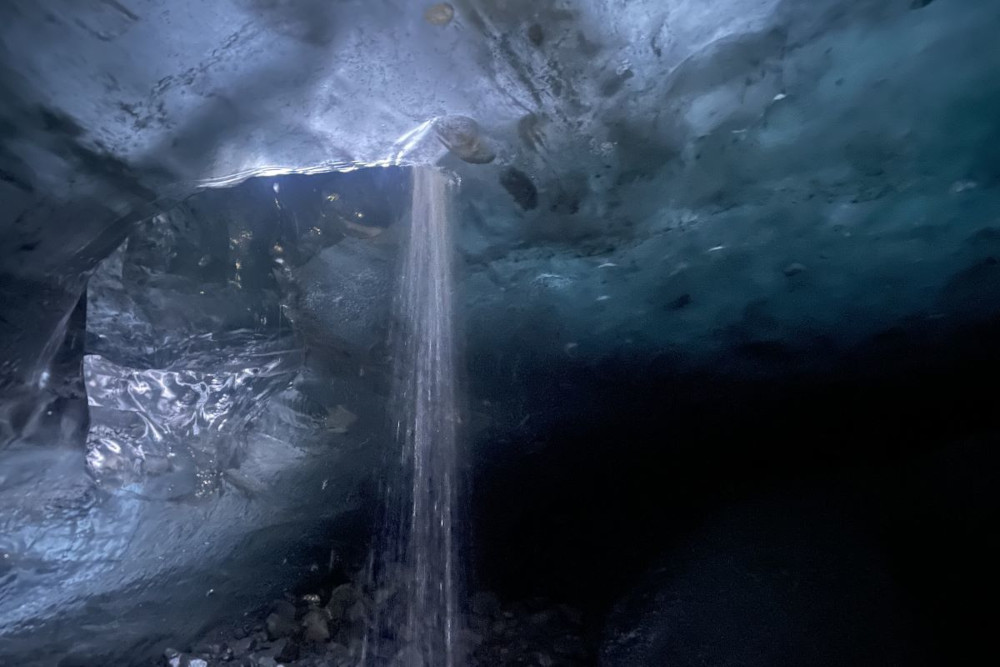
Waterfall -blue Ice Cave Fjallsarlon Lagoon
The processes that shape a glacier and its ice caves aren’t finite or consistent. As you’ll appreciate once you’ve been in Iceland for even just a few days, weather conditions can be unpredictable. Melting destabilises the ice, resulting in ice falls and collapses. Find yourself inside when that happens and there’d be a very real possibility that you could end up buried under many tonnes of ice if there’s a cave-in.
And another note of caution: some natural ice caves in Iceland are created by geothermal processes rather than weather-related change. Instead of seasonal increases of temperature being responsible, the ice melts as a result of geothermal heating. This causes gases such as hydrogen sulphide, sulphur dioxide and carbon monoxide to be released, all of which are significantly harmful to humans if inhaled. You get it: you don’t mess with nature in this kind of place.
Be safe – book a tour
In short, as a casual visitor to an ice cave you may be unaware, you’re in any danger until it’s too late. However, specialist tour operators such as those at Fjallsárlón monitor conditions closely and will only take guests to natural ice caves that they believe are safe. Think about it: the Icelandic authorities wouldn’t allow ice cave tours if this wasn’t the case.
You don’t even have to be incredible shape: getting to some natural ice caves can involve a hike of less than 30 minutes. The blue ice cave located within Breiðamerkurjökull outlet glacier is one such cave. Others are more accurately described as hidden gems. These will involve a considerable amount of walking and a greater level of fitness, so discuss your needs to be sure you end up on the right tour for you.
Don’t pass up the chance to see a natural ice cave in Iceland
If your Icelandic adventure is going to take you along the scenic south coast, then you really should consider making a stop at Fjallsárlón for a natural ice cave tour. In a world where terms such as wonderful and awesome are bandied around without much thought, this is one environment where their precise definition holds true. Prepare to be impressed – they don’t disappoint!
Check the excursions organized by our tour company:



